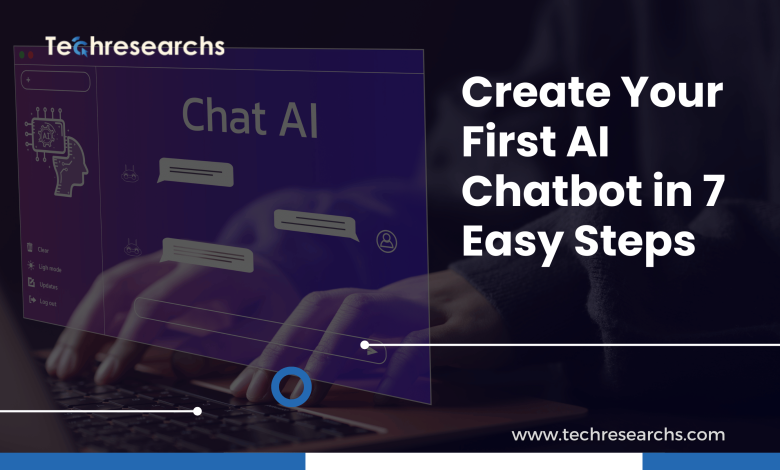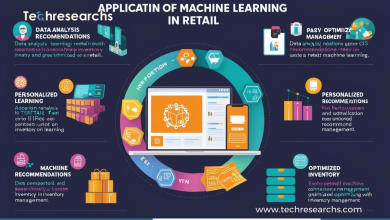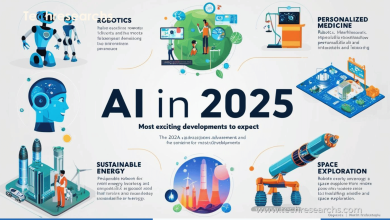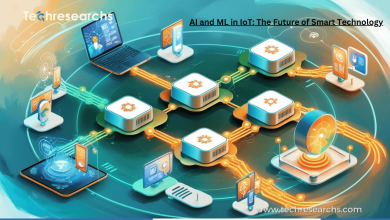Create Your First AI Chatbot in 7 Easy Steps

AI-powered chatbots have transformed the way businesses interact with their clients. Whether it’s engaging your audience, streamlining processes, or offering personalized customer support, creating an AI chatbot is easier than you think. In this guide, we’ll walk you through seven easy steps to build your first AI chatbot, even if you’re a tech newbie. Let’s dive into the world of AI chatbots and make your vision a reality.
Why Build an AI Chatbot?
Before we dive in, let’s explore why you need an AI chatbot:
- 24/7 Availability: Provide assistance anytime, improving customer satisfaction.
- Cost-Effectiveness: Save on human resources by leveraging automated solutions.
- Scalability: Engage with thousands of users simultaneously.
- Personalization: Offer tailored responses based on user preferences.
1. Determine Your AI Chatbot’s Purpose
The first step in building a chatbot is to define its purpose. Ask yourself:
- What problem will the chatbot solve?
- Who is your target audience?
- What tasks should it handle? Examples: customer support, lead generation, FAQs.
Example:
If you run an e-commerce site, your chatbot can assist users in finding products, tracking orders, and managing returns.
2. Select the Right Platform
You don’t need to be a coder to create a chatbot. Several no-code and low-code platforms make it easy to get started:
- No-Code Platforms: ChatGPT API, Tars, ManyChat
- Low-Code Platforms: Microsoft Bot Framework, Dialogflow
- Custom Development: For advanced needs, hire developers to build custom solutions.
Pro Tip: Choose a platform that integrates seamlessly with your CRM or email marketing tools.
3. Plan the Conversation Flow of Your Chatbot
An AI chatbot is only as good as its conversation design. Plan a natural, logical flow to ensure engaging interactions.
Steps to Plan a Conversation Flow:
- Map out user queries and expected responses.
- Include decision trees to guide users effectively.
- Prepare fallback responses for unexpected inputs, like “I’m sorry, I didn’t get that.”
Example Flow for a Restaurant Chatbot:
- User: “What’s on the menu today?”
- Chatbot: “Our menu includes pizza, pasta, and salads. Would you like to place an order?”
4. Integrate AI and NLP
AI and Natural Language Processing (NLP) enable your chatbot to provide intelligent, human-like responses. These technologies help the bot:
- Recognize user intent.
- Process language variations.
- Deliver informative, conversational replies.
Popular NLP Tools:
- IBM Watson Assistant
- Google Dialogflow
- OpenAI GPT models
Tip: Many platforms like ChatGPT API come with strong built-in NLP capabilities.
5. Train Your Chatbot
Training your chatbot is essential to ensure it provides accurate and relevant answers. Here’s how:
- Use Real Data: Train the bot using historical customer interaction data.
- Add Variations: Include multiple ways users might phrase their questions.
- Test Continuously: Refine responses with test cases.
Example Training Scenario:
Common query: “How do I reset my password?”
Variations:
- “I forgot my password.”
- “Help me log in.”
6. Test and Launch Your Chatbot
Testing ensures your chatbot is ready for real users.
Testing Checklist:
- Functionality: Does the bot complete tasks as expected?
- Accuracy: Are the responses relevant and helpful?
- User Experience: Is the chatbot easy to use?
Once tested, launch the chatbot on your chosen platform (website, app, or social media) with clear instructions for users.
7. Monitor and Optimize Performance
Building a chatbot isn’t a one-and-done task. Monitor its performance and make improvements based on user feedback.
Key Metrics to Track:
- Engagement Rate: How often do users interact with the bot?
- Resolution Rate: How effectively does the bot solve user queries?
- User Satisfaction: Are users happy with their experience?
Optimization Tips:
- Add features based on user needs.
- Regularly update training data.
- Use analytics tools like Google Analytics or platform-specific dashboards.
Best Practices in Creating AI Chatbots
- Start Small: Begin with a single, well-defined task and expand over time.
- Be Human-like: Use a friendly, conversational tone.
- Ensure Privacy: Implement robust security measures.
- Provide Escalation Options: Enable users to connect with human agents if needed.
Tools and Resources for Building Your Chatbot
Here are some tools to kickstart your chatbot journey:
- Chatbot Builders: Tidio, Landbot, Chatfuel
- NLP Libraries: SpaCy, Rasa, Hugging Face
- Testing Tools: Botium, TestMyBot
Creating your first AI chatbot doesn’t have to be intimidating. By following these seven steps, you’ll develop a functional, user-friendly chatbot to enhance your business operations. Start with a clear purpose, use the right tools, and keep optimizing for better performance.
Ready to build your first AI chatbot? Start today and take your business to the next level. Need guidance? Contact us for expert assistance!
Read More: Will AI Replace Programmers Sooner Than We Think? – TechResearchs



